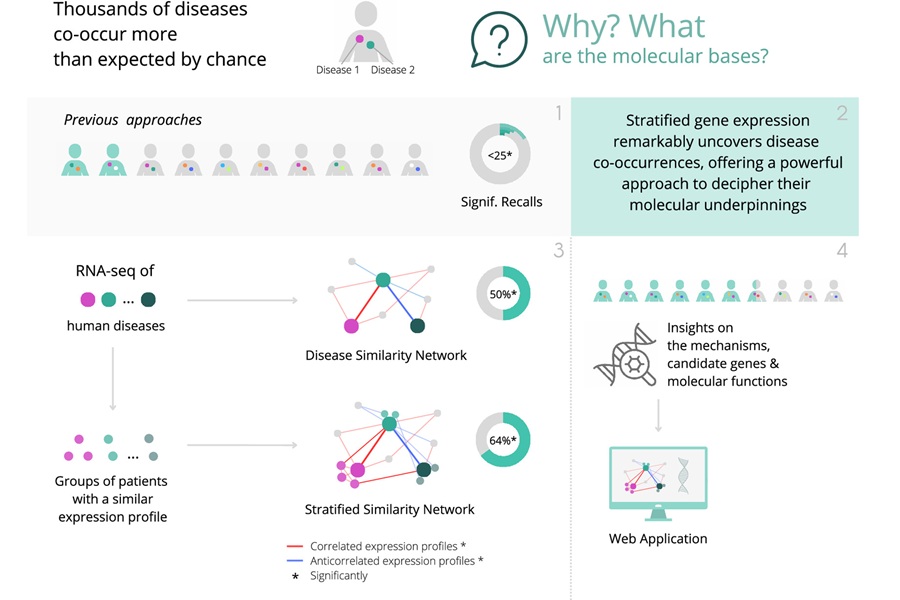Molecular Map Reveals Previously Hidden Connections Between Diseases
Posted on 05 Sep 2025
The human body is a complex and interconnected system, where alterations caused by one disease can promote the onset of others. This tendency for diseases to occur together, beyond what would be expected by chance, is called co-occurrence. While some associations, such as Crohn’s disease and ulcers, are well known, the molecular mechanisms behind many of these links remain poorly understood. Now, a large-scale computational study has provided a way to map and explain these hidden connections between diseases, helping identify underdiagnosed associations.
A study by the Barcelona Supercomputing Center – Centro Nacional de Supercomputación (BSC-CNS, Barcelona, Spain) analyzed molecular data from over 4,000 patients across 45 diseases using a newly developed computational method. This research represents the most significant effort to date to explain clinical associations between diseases. By combining gene expression data with computational models, researchers built a molecular map to trace interactions that had remained obscure until now.

The results show that similarities in gene expression explain 64% of medically known connections. Positive interactions were observed, where one disease favors the onset of another, such as asthma and Parkinson’s disease. Negative interactions were also detected, where some patients appear to be protected from developing other diseases, for example, cancer and Huntington’s disease.
The study, published in PNAS, highlights that the immune system plays a central role, with common alterations in immune pathways detected in 95% of clinically related diseases. Patient subgroups based on molecular profiles revealed further connections, such as links between certain breast cancer subgroups and autism or bipolar disorder. This approach could also benefit rare disease research by uncovering associations despite limited clinical data, potentially leading to better diagnosis and tailored therapies.
The team has created a publicly accessible web platform where users can explore the positive and negative interactions between diseases and their potential molecular mechanisms. This new resource could improve the prediction of disease risk and aid in preventive, personalized medicine by showing how diseases are interconnected through shared biological pathways. It opens the door to developing new therapeutic strategies guided by these molecular insights.
“The study has revealed that many associations only emerge in certain patients, which would explain why two people with the same disease can have completely different clinical trajectories,” said Beatriz Urda, researcher at the BSC and lead author of the study. “This approach allows us to identify potentially underdiagnosed associations and propose molecular mechanisms to explain clinical links that have been poorly understood until now.”
Related Links:
BSC-CNS
Disease Similarity Networks based on gene expression profiles













